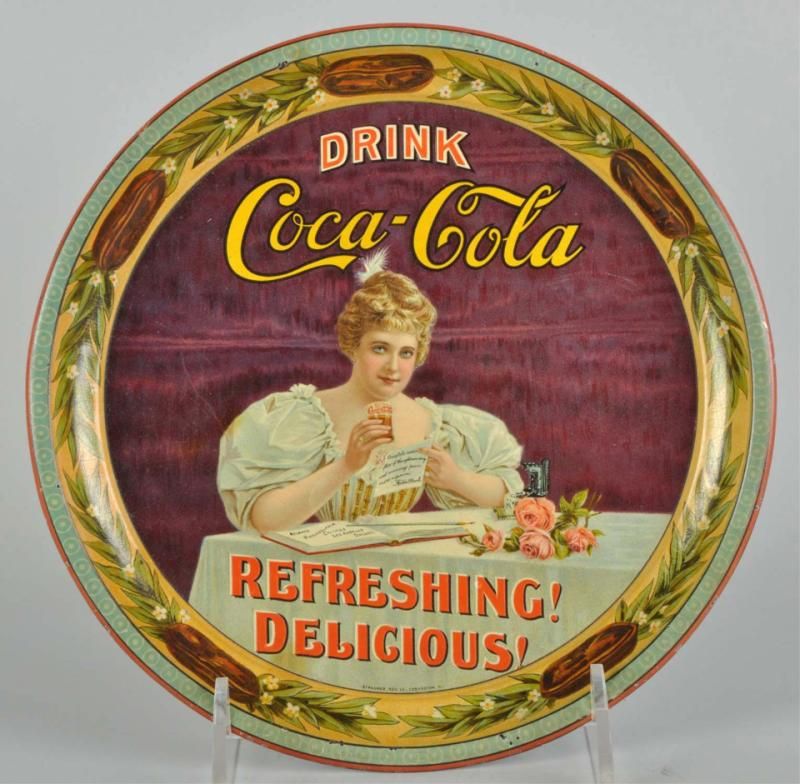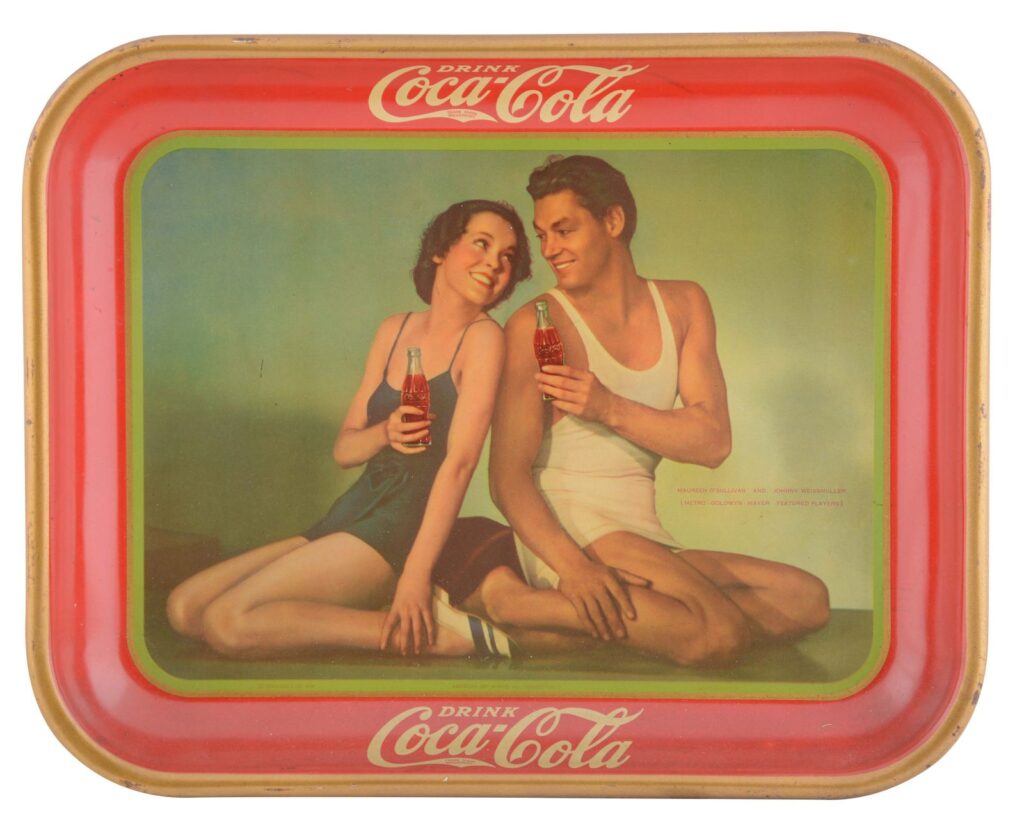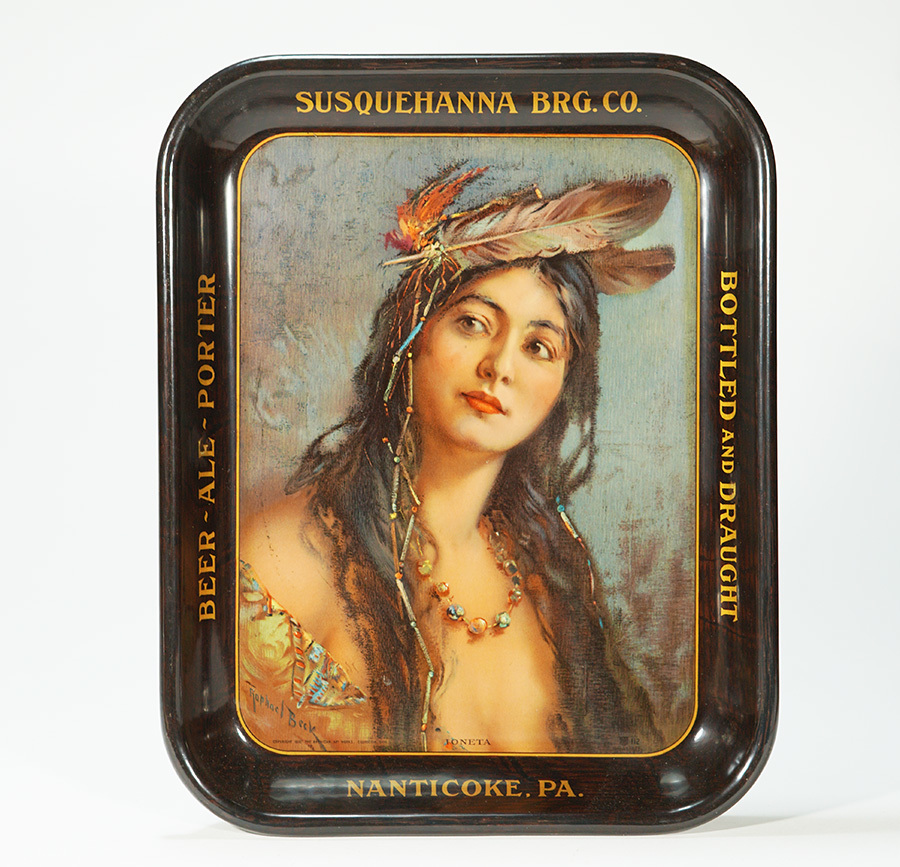Advertising is everywhere nowadays, but for some collectors and enthusiasts, the early days of mass advertising are truly fascinating.
The period from 1900 to around the 1930s represents the golden age of advertising trays when these items were both practical household tools and innovative marketing devices. Companies from across all industries, from tobacco to soft drinks, saw these trays as a way to present their brand with attractive artwork and advertise their product in consumers’ own homes.
The Rise of Advertising Trays
Before radio and television dominated mass media, physical products were the most promising way for companies to promote their brands. Trays with intricate paintings arose around the end of the 19th century and quickly proved popular. The most common subject of these paintings was a young woman in fashionable attire, sometimes enjoying the promoted product.
For modern collectors, these paintings are fascinating—not only do the trays represent how women’s fashion changed over the first few decades of the 20th century, but they also illustrate the kind of clothing and lifestyle that the average middle-class consumer found aspirational at the time. The subjects of these paintings were seen to embody the effortlessly cool elegance that brands were eager to associate themselves with. This image was especially crucial for brands like Coca-Cola, who were attempting to reinvent their product from a medicinal tonic to a trendy, refreshing drink.
From the early 1900s, advertising trays became inescapable. Many were used by establishments that sold the products in question, but others would be sold or given away to consumers—a cunning strategy to essentially get people to willingly display corporate advertising in their own homes. The designs made the trays feel more like vibrant decorations than mere advertising, and many people were eager to get their own trays.
Coca-Cola Trays
Probably the best place for a collector to start is with Coca-Cola’s iconic trays. The Coca-Cola Company was perhaps the foremost brand to seize on the popularity of advertising trays. They produced several iconic designs, which are often identified by the supposed first name of the model. Unfortunately for collectors who want authentic original trays, these designs became very popular again in the 1970s, and countless reproductions were made to capitalize on the nostalgia, making finding originals trickier.
The first person to model for a Coca-Cola tray was Hilda Clark, a music hall performer who lent her image to the company’s advertising in 1895. She modeled for several paintings for the company up until 1903. Her image appeared on many advertising materials, from signs to calendars to trays. Any original trays bearing her likeness can sell for thousands. In 2023, a 1903 tray with a painting of Clark went for over $4,000. In 2019, a 1901 tray with a painting of Clark sold for $7,000. Others have historically gone for even more, often over $15,000. Clark’s image was so iconic at the time that the Pepsi company attempted to create similar trays, which are also collectible today.

Other celebrity endorsers stepped in when Clark’s period with the company ended. Among these was Lillian Nordica, an accomplished opera singer and women’s rights activist, who appeared in advertising around 1904. A tray from that year with her likeness sold for over $4,000 in 2021.
Later trays were produced in higher numbers and are thus often cheaper to collect, but they can still command high prices. An iconic design—one which was reproduced frequently from the 1970s onward—is the “Betty” painting from 1914. The model’s identity is unknown (the name “Betty” was given by collectors to identify the design), but her likeness was used on countless products in 1914, including trays. “Betty” trays can go for hundreds of dollars, but reproductions are so common that collectors should take extreme care before paying high prices.
Similar to the “Betty” trays, the “Elaine” design—again, the identity of the model is unknown—was used prominently in 1916 and became synonymous with the First World War (the design is even sometimes referred to as “WWI girl”). Original trays can go for thousands—but again, this design was a highly popular choice for later reproductions, and the market is flooded with them.
Though pre-1920 trays are the most collectible, Coca-Cola continued to produce trays well into the mid-century. One notable example is the 1934 tray featuring Johnny Weissmuller and Maureen O’Sullivan, who were starring together in the popular Tarzan film series that year. Trays from the 1920s are also popular due to their depiction of members of the “flapper” subculture, often in lavish dress and depicted in party scenes, such as in this 1925 tray.

Other Trays
Along with soft drinks companies, innumerable other brands capitalized on the trend of advertising trays. Perhaps the most fascinating are beer companies, given that many of these are from the pre-Prohibition era, offering a glimpse into American history.
Tip trays from the pre-Prohibition era can often be auctioned for around a thousand dollars. Similar to the Coca-Cola trays, these often include women’s fashion of the era. One tray from around 1910 that sold for just under $1000 depicts a fashion-forward woman with a tiger. Other trays have more surreal or fantastical imagery. A tobacco tray from the 1910s depicting a woman lounging on the moon went for over $1000 in 2021, and a tray depicting dogs smoking cigarettes from the same era went for $800.
Models of different nationalities and ethnicities were depicted in this era. Murad Cigarettes had a Turkish model to accompany their claim of being “THE Turkish cigarette.” Susquehanna Brewing Company advertised with a Native American woman in 1910, and Mathie Brewing Company produced a tray with a Hawaiian ukulele player.

For anyone interested in the early 20th century, advertising trays present a chance to own a piece of that era. Their striking and intricate designs make them attractive display pieces—just beware of the countless reproductions if your goal is to own an original.
Matthew Doherty is a writer, editor, and teacher specializing in all things history-related. His work has been published in the UK Defence Journal, the Small Wars Journal, and The Collector. He holds an MSc from the University of Edinburgh and a BA from the University of Leeds. In his spare time, he also writes science fiction stories.
WorthPoint—Discover. Value. Preserve.
Credit: Source link






























